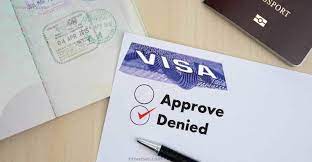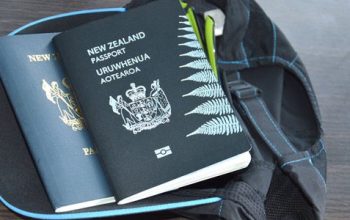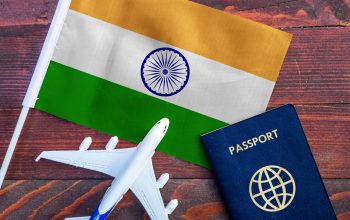Are you a Ugandan citizen looking to explore the vibrant and diverse culture of India? Look no further! In this blog post, we will guide you through the step-by-step process of applying for an Indian visa as a Ugandan citizen. From filling out the application form to scheduling your appointment, we’ve got you covered. Get ready to embark on an unforgettable adventure in India – all starting with your visa application! Indian Visa for Uganda Citizens
Introduction to Indian Visa for Ugandan Citizens
If you are a Ugandan citizen planning to travel to India, one of the most important things you need to take care of is obtaining a visa. A visa is an official document that gives you permission to enter, stay, and engage in certain activities in a foreign country. In this case, it allows you to visit India for tourism, business, or medical purposes.
India has become an increasingly popular destination for travelers from all over the world due to its diverse culture, rich history, and beautiful landscapes. As a result, there has been a steady rise in the number of Ugandans visiting the country each year. However, before embarking on your journey, it is essential to understand the process of applying for an Indian visa as a Ugandan citizen.
Types of Visas Available for Ugandan Citizens
Before applying for an Indian visa, it is crucial to determine which type of visa best suits your purpose of travel. There are various types of visas available for Ugandan citizens depending on their purpose and duration of stay in India.
1. Tourist Visa: This type of visa is issued for individuals who intend to visit India for leisure or sightseeing purposes. It is valid for 6 months from the date of issue and allows multiple entries into the country. Indian Visa for Senegal Citizens
2. Business Visa: If your purpose of travel involves attending business meetings or conferences in India or exploring investment opportunities in the country, then you will need a business visa. This type of visa can be valid for up to 1 year with multiple entries allowed.
3. Medical Visa: For those seeking medical treatment in India, a medical visa is required. It allows individuals to enter the country multiple times during its validity period and can be extended by up to one year if necessary.
Visa Application Process
The first step towards obtaining an Indian visa as a Ugandan citizen is completing an online application form through the Indian Visa Online website. The application process involves filling out personal information, details of your visit, and uploading supporting documents such as a valid passport and a recent photograph.
Once the online form is completed and submitted, you will be required to make payment for the visa fees through the available payment options. After successful payment, you will receive an Electronic Travel Authorization (ETA) via email within 3-4 business days.
Upon arrival in India, you will need to present your ETA along with your passport at the immigration counter for verification. Once approved, you will be granted entry into the country.
Obtaining an Indian visa as a Ugandan citizen is a relatively straightforward process. However, it is important to apply well in advance of your intended travel dates to avoid any last-minute delays or issues. With proper planning and preparation, you can enjoy a hassle-free trip to India and explore all that this beautiful country has to offer.
Step-by-Step Guide to Applying for an Indian Visa:
Applying for an Indian visa as a Ugandan citizen may seem like a daunting task, but with the right information and guidance, it can be a smooth and hassle-free process. In this step-by-step guide, we will walk you through the entire process of applying for an Indian visa.
Step 1: Determine the type of visa you need
The first step in applying for an Indian visa is to determine the type of visa you require. India offers various types of visas such as tourist visas, business visas, student visas, and medical visas. Each visa has its own set of requirements and purposes. You must choose the one that best fits your reason for visiting India.
Step 2: Gather all necessary documents
Once you have determined the type of visa you need, it is essential to gather all the necessary documents required for your application. These may include a valid passport with at least six months validity remaining from your intended date of arrival in India, completed application form, recent passport-sized photographs, and supporting documents depending on the type of visa.
Step 3: Fill out the online application form
All applicants are required to fill out an online application form through the Indian government’s official website -The online application form must be filled accurately with no errors or discrepancies. It is recommended to keep all your documents handy while filling out the form as they may be needed during this process.
Step 4: Pay the application fee
After completing and submitting your application form online, you will be prompted to pay the required fees through various payment methods offered by Indian authorities. It is essential to keep a copy of your payment receipt as proof.
Step 5: Schedule an appointment at VFS Global Centre
Once you have paid your fees successfully, you can log into your account on VFS Global’s website – https://www.vfsglobal.com/en/individuals/index.html, and schedule an appointment at the nearest VFS Global Centre. During your appointment, you will be required to submit your biometric data and supporting documents.
Step 6: Track your application
After submitting your application, you can track its status online using the reference number provided to you. It is essential to check regularly for any updates on your application.
Step 7: Collect your passport with visa
Once the Indian authorities have processed and approved your visa, you can collect it from the VFS Global Centre where you submitted your application. Remember to carry all required documents during collection.
Congratulations! You have successfully applied for an Indian visa as a Ugandan citizen. We hope this guide has been helpful in simplifying the process for you. Remember to plan well in advance and follow all instructions carefully to avoid any delays or rejections in your visa application.
Tips for a Smooth Visa Application Process
Applying for a visa can often be a complicated and daunting process, especially if you are unfamiliar with the requirements and procedures. However, by following these tips, you can make your Indian visa application process smoother and more efficient.
1. Start Early: Give yourself enough time to complete the application process to avoid any last-minute rush or delays. It is recommended to start at least 2-3 months in advance of your planned trip.
2. Understand the Requirements: Before beginning your application, it is important to familiarize yourself with all the necessary documents and information required for an Indian visa as a Ugandan citizen. These may include a valid passport, photographs, proof of financial stability, travel itinerary and accommodation details.
3. Fill Out the Application Correctly: Take your time to fill out the application form accurately and completely. Any mistakes or missing information can cause delays or even lead to rejection of your visa.
4. Gather Supporting Documents: Along with the application form, you will need to provide supporting documents such as bank statements, proof of employment or business ownership, return flight tickets and hotel reservations. Make sure that these documents are organized neatly and easily accessible when needed.
5. Choose the Appropriate Visa Type: India offers different types of visas depending on the purpose of your travel such as tourism, business or medical purposes. Ensure that you select the correct type of visa according to your intended activities in India.
6. Pay Attention to Fees: The cost of an Indian visa varies depending on various factors such as nationality and duration of stay. Make sure you have enough funds available in case there are unexpected charges during the application process.
7. Be Honest: It is crucial to provide truthful information throughout the entire process as any discrepancies may result in rejection of your visa or even future applications.
8.Need Assistance? If you have any doubts or concerns regarding the application process, do not hesitate to seek help from official sources such as the Indian embassy or a reliable travel agent.
9. Track Your Application: Once you have submitted your application, you can track its progress online or through the visa service provider’s website. This will give you an idea of how long it may take and when to expect your visa to be ready.
By following these tips, you can ensure a smooth and hassle-free application process for your Indian visa. Remember to plan ahead, be organized and provide accurate information to increase your chances of success.
Common Reasons for Visa Rejections and How to Avoid
Applying for a visa can be a stressful process, especially when you are planning to visit a new country. As a Ugandan citizen applying for an Indian visa, it is essential to understand the common reasons why visas may get rejected and how to avoid them. Here are some of the most common reasons for visa rejections and ways to prevent them from happening.
1. Incomplete or Incorrect Application Form:
One of the most common reasons for visa rejections is an incomplete or incorrect application form. It is vital to fill out all sections of the form accurately and completely. Any missing information or errors can lead to rejection. Make sure you double-check all details before submitting your application.
2. Insufficient Supporting Documents:
Another frequent cause of visa rejections is insufficient supporting documents. The Indian embassy requires specific documents as proof of your purpose of travel, financial stability, and ties with your home country. It is crucial to provide all necessary documents in their original form along with translated copies if they are not in English.
3. Lack of Financial Stability:
The Indian government wants assurance that you have enough funds to support yourself during your stay in India without engaging in any illegal activities such as working without proper authorization. If they find that your financial status does not meet their requirements, your visa application may get rejected.
4. Criminal Record:
Having a criminal record can also lead to rejection of your visa application, as it raises security concerns for the host country. It is crucial to disclose any past convictions or charges on your application form honestly.
5.Cover Letter Not Included:
A cover letter stating the purpose of your trip and other relevant information can significantly strengthen your case for obtaining an Indian visa as a Ugandan citizen. Not including one with your application might result in rejection as the authorities may question the validity of your trip.
6.Inadequate Travel Insurance Coverage:
Travel insurance is a mandatory requirement for obtaining an Indian visa. However, if the coverage amount is insufficient or does not meet the embassy’s criteria, your visa application may get rejected. Make sure to purchase travel insurance with adequate coverage before submitting your application.
To avoid these common reasons for visa rejections, it is essential to carefully read and follow all instructions provided by the Indian embassy. Thoroughly review your application and supporting documents before submission. It may also be helpful to seek assistance from a reputable travel agency or immigration lawyer to ensure that your application meets all requirements.
Understanding these common reasons for visa rejections and taking steps to prevent them can increase your chances of obtaining an Indian visa as a Ugandan citizen successfully. So make sure you are well-prepared and have all necessary documents in order before submitting your application.



